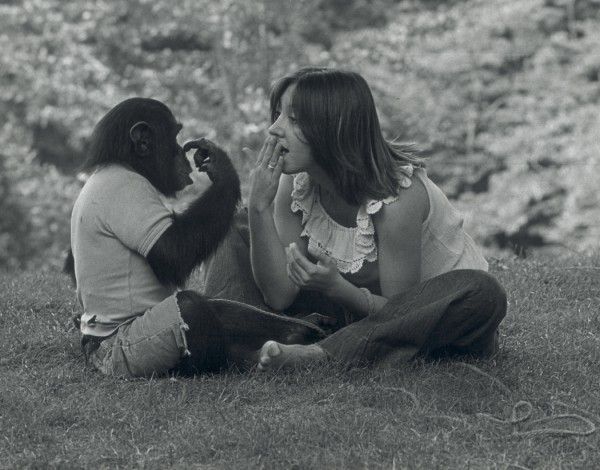[This review is a re-post of the review I posted at Sundance. I'm re-posting it because Project Nim opens in theaters today and it's one of the best films I've seen all year.]
What separates men from beasts? What at first seems like an easy question yields no obvious answer in the captivating and fascinating documentary, Project Nim. Nim was a chimpanzee who was ripped away from his mother in the early 1970s and put into an experiment to see if he could communicate with sign language provided if he was raised and treated like a human child. What was already a tricky proposition became almost impossible when combined with the bizarre and dubious cast of characters who surrounded the young chimp. Through magnificent use of re-enactments, interviews, and powerful archive footage, Project Nim is a film that not only has you turning over questions on the nature of humanity, but it also inspires laughter, shock, revulsion, and heartbreak in seeing how Nim swings between dangerous animal and lovable companion.
As Dr. Herb Terrace says of his unethical dealings in his experiment of trying to raise Nim as a human and teach him sign language, “It was not good science.” Let’s put aside for the moment that Terrace, a Columbia University professor who should have been running a professional program, was banging the women who were in charge of essentially raising Nim. Nim’s first caretaker, was a rich hippie who had no training in animal development, chimpanzee behavior, or sign-language. She treated Nim like a child who got to do whatever he wanted and didn’t mind his manipulations or violent outbursts towards male authority figures. Instead, she was more fascinated with watching him masturbate. In one of the film’s creepier scenes, she says that Nim’s behavior towards her “was not sexual, but it was sensual.” This is how the Nim experiment began.
Eventually, Terrace wised up and realized that while it sure was neat having a family of hippies raise Nim, no actual data was being recorded, which is kind of important when you rip a newborn chimp away from its birth mother for the purpose of scientific study. Into the picture came Laura, an actual student who started teaching Nim sign language in earnest and tracking his progress. Nim learned new vocabulary at a remarkable rate. Like all of Nim’s caretakers (except for the callous, self-serving Terrace), Laura became attached to Nim and clearly loved him. But she was also a victim of Nim’s violent outbursts.
And this is where Project Nim deserves its greatest praise. Rather than shy away from Nim’s primal nature, director James Marsh explores the complex duality of Nim’s behavior. Nim could be kind and sweet and affectionate. On that level, people wish to see him as a child. The only problem is that most children don’t try to fuck the cat or bite your face off. Nim was unpredictable and the larger question looming over the experiment is whether or not the imparting of language is able to humanize him. Personally, I don’t think it is possible. I think Nim learned a neat trick, but he was not a child and he wasn’t a pet. The grand irony is that in attempting to better understand the power of communication, Nim’s “teachers” were constantly projecting their feelings onto him.
Of course, the notion of humanizing Nim automatically puts the entire concept of an animal experiment into doubt. If Nim was brought up with human love and affection, could he ever go back to living among chimpanzees? Where did the humanity in Nim start and stop, provided it ever began? More troubling, who was to say Nim possessed a greater recognition of his situation than other chimpanzees? Can an animal feel resentment? Can it feel loathing? Or are we simply using meaningless words to impart greater meaning on simplistic actions?
Despite these heavy questions, Nim never loses its heart. While some of the people in Nim’s life are absolutely loathsome, others are heroes and it’s heartbreaking to see them severed from Nim’s life. But at other times, the film manages to stay light, whether it’s examining the dark absurdity of Terrace’s callous ambition or if it’s something as silly as seeing Nim smoke weed. But it all comes back to the impossible question of what it means to be human and if it’s possible that humanity can be taught. And if it can be taught, then who is qualified to teach it?
Rating: A




